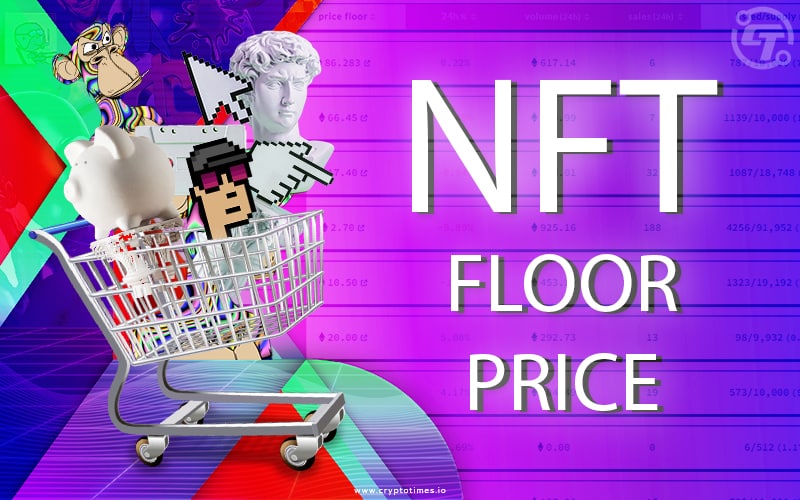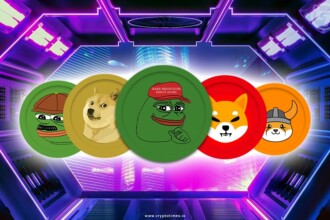If you’ve just started exploring the NFT space, you’ve probably been told to look into the NFT floor price. While the floor price is simple to understand, figuring out how to work around it when it fluctuates can be challenging.
To brief you before we begin, the NFT floor price is the minimum amount that you can spend to own an NFT or become a holder of a project. An NFT floor price is a term given to represent the current lowest price for which one can own an NFT in a certain collection or project.
This is only the tip of the iceberg, as the NFT floor price is the decisive factor that helps NFT enthusiasts value a project.
In order to reap the benefits of the pricing structure, you must regularly monitor the NFT space because the floor prices of NFT projects might change depending on even the slightest amount of community activity. This article will explain everything you need to know about NFT floor prices so you can choose the best NFT project for you.
What is NFT Floor Price?
NFT floor price is the lowest amount of money you will have to spend to buy an NFT from a collection.
The floor price is decided by the individual who owns an NFT in a particular project and lists the NFT for sale at a price cheaper than all other sellers within that given project.
Initially, the floor price of an NFT is based on mint by the creator or company of the NFT project. Once the minting process ends, the floor price is determined by holders listing it on a secondary marketplace.
Usually, NFT holders prefer to list their NFTs at a higher floor price on the secondary market than what they minted it for to make profits. On the other hand, some people impulsively list their NFT lower than the initial mint price to free up liquidity.
To judge the value of an NFT, you must go through the NFT floor price chart, which is the list of NFT collections with the floor price mentioned before it. This way, you can analyze which NFT collection has the maximum floor price, comparing one with the other at once.
How to Analyze the Floor Price of an NFT?
NFT floor price is one of the essential crypto metrics you could analyze when buying into a collection or project. Let’s understand how it works.
Remember, floor price in any case is the lowest price rather than the average price of an NFT. Suppose you list the NFT for sale at 0.2 ETH and the other people with the NFTs from the same collection list it at 0.4 ETH or above, then the floor price becomes 0.2 ETH. Hence, it’s not an average; it’s a minimum price one must pay to own an NFT in that specific collection.
Types of NFT Floor Price
Now, you are ready to understand the different types of floor pricing and what it means as an NFT buyer.
Real-time Value
The floor prices tend to continually change from time to time, depending on the current market value. Thus, real-time updates on prices take place in the market on which generally people base their buying and selling decisions.
Most crypto players refer to NFT floor price charts to track NFT collections. Some of the popular NFT floor price trackers are niftyprice.io, nftpricefloor.com, icy.tools, nftcharts.io, and cryptoslam.io.
Decreasing Floor Price
If you are part of an NFT project whose floor price is declining, there is no need to panic or sell your digital asset on a whim. It’s not necessarily a bad thing, in fact, it is considered quite common. There are several factors that determine an NFT’s value and these factors keep on fluctuating depending on things like new developments in the project, new holders and added utilities.
Last December, the floor price of the BAYC NFT collection surpassed the floor price of CryptoPunks NFT for the first time. As the BAYC NFTs are considerably more recent than CryptoPunks, which are regarded as the OG NFTs and were introduced in 2017, this generated a lot of media attention.
This incident demonstrates the unpredictability of floor prices, so take your time to research why the project is worth investing in. We are well aware of how BAYC has now become an elite NFT community with celebrities endorsing it now and then.
You never know when some new NFT project can take over the other, yet that doesn’t mean it can not crash down in future events.
Though NFT’s floor prices are a strong parameter to make judgments on where a project will be headed, you can not completely rely on it.
If you observe something negative has occurred and people are skeptical to keep their money invested in some specific NFT project, consider selling your NFT before it becomes irrelevant.
Also, if there aren’t any indicators that an NFT project has done something to negatively affect its reputation, then maybe it’s because people are impatient and are probably pulling their money to invest in some other projects. These people are often called “paper hands”.
Increasing Floor Price
If you notice an NFT’s price pumping, don’t make an impulse purchase. Often, increasing NFT’s floor price is a good thing for many reasons. However, it can also be an artificial pump for the hype in an attempt to get more people to invest into the project.
Proper research is needed in both cases, especially when the floor prices show dramatic swings. The reasons remain the same as mentioned in decreasing floor prices including new developments, collaborations with influential personalities, and added utility or promising roadmap.
Make sure whatever is causing the price increase is sustainable and not merely a hype unless you intend to flip the NFT for a profit straight away.
Note that an increase in floor price isn’t always the best time to buy an NFT because you are paying more. Usually, when the price dips is when you would want to buy into a project, assuming the dip isn’t the result of some negative occurrence.
Reasons behind NFT floor prices Fluctuations
There are several reasons that are responsible for NFT floor price fluctuations including:
- Demand for the NFT
If the demand for a certain NFT collection increases, its floor prices also get higher. Likewise, if there is minimal demand, expect the market to set the price lower.
- Added Utility or offering
Many NFT projects offer no actual value to holders and consequently, the floor price keeps on declining over time. However, people who have used NFTs to build successful brands and ecosystems around them, provide real value and utility to their holders. This in turn boosts the floor price.
- The Reputation of the Brand/Creator
When someone well-known in the market drops an NFT, the floor price is likely to be higher. This is simply because the trust between the creator and the community has already been fostered. Whereas, someone who is new to the market is largely unknown and has to gain the trust.
It doesn’t mean reputable brands and prominent creators will offer NFTs at the higher floor price, rather they could if they really want to.
- Collaborations
When influential personalities come together to launch a project, the NFT essentially doubles up in value. One such example is hip-hop legend Snoop Dogg’s collaboration with NFT artist Coldie. Together they launched ‘Decentral Eyes Dogg’ NFT which sold off for a whopping 188.8 ETH, which is a lot of money.
These NFT releases have even higher floor prices and continue to command a premium price on secondary markets due to their ubiquity and the personalities associated with them.
Also Read: 5 Easy Steps to Create an NFT
Conclusion
Buying NFTs at their floor price isn’t a bad idea as you can obtain them at their lowest possible price and sell them off for a higher price. The downside of this is that the floor price often falls further after an NFT project sells out. This means that if you don’t plan to hold your NFT, then you’ll now have to sell it at a loss.
Well, there are several ways and factors that contribute to the NFT floor price and how it will unfold in the future. So do your own research before purchasing an NFT, even at its floor price.







